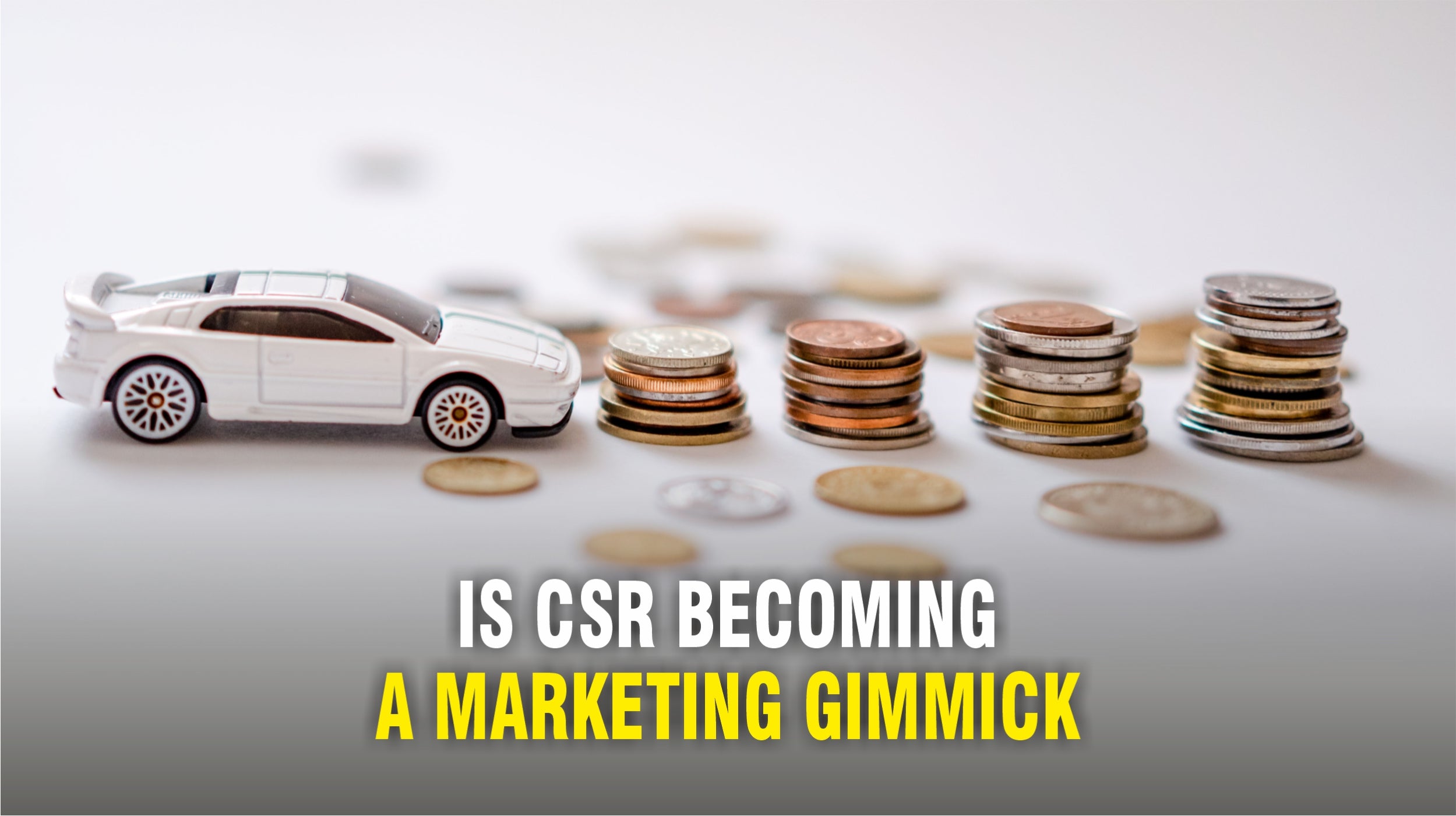
Is CSR becoming a Marketing Gimmick
by Vibrant Publishers
We all know that corporate social responsibility is supposed to have a positive impact on society. It is seen as a way for companies to make genuine efforts to help improve communities. However, in recent years, there has been a slow rise in debates on whether CSR is now becoming a marketing gimmick used by businesses to earn more profits.
This is because there have been some companies that use their CSR to strategically increase trustworthiness through positive imaging which then results in increased sales and profit.
Is CSR Being Used as a Marketing Strategy?
It can be a bit complicated to tell whether companies use CSR as a marketing strategy or not. However, the answer can often be determined based on the sincerity of the philanthropic efforts by companies. Here are some signs that show companies are using CSR as a marketing strategy.
Over Exposure:
You can notice whether the intention of a company behind their CSR initiative is pure or for marketing purposes based on the amount of exposure that they use to cover the event. For example, various newspaper personnel and photographers attend a small charity event of a company. The need for media attention can make you question the intentions right then and there.
CSR Activities Before Product Launch:
Another way that companies use CSRs as a marketing strategy is when they have a new product launch coming. They will use the positive attention from the CSR event to boost their trustworthiness to consumers. This will later translate into sales in the future.
Let’s have a look at CSR vis-à-vis its internal and external environment.
- CSR and Employees:
Research done by Cone Communications has shown that around 88% of millennials prefer a workplace that has strong CSR values. Another statistic revealed by Net Impact said that 53% of workers believe that working on a job that allows them to “make an impact” plays a key role in their happiness.
There’s also another study saying that the more a company goes for social and environmental efforts, the more engaged the employees will get.
- CSR and Consumers:
CSR has the ability to influence both investors and consumers. Research from Reputation Institute revealed that CSR makes up 40% of a company’s reputation. A number of companies that have the CSR approach, like Unilever for example, are able to gain a number of benefits such as increased growth and profits.
On the other hand, companies that failed to properly implement CSR, such as Nike, have suffered from a lot of setbacks. According to Unilever, roughly 31% of consumers around the world prefer sustainable brands and think that businesses should change how they operate in order to align with environmental and social needs.
- CSR and Community:
According to research, CSR activities that help develop downtrodden communities were perceived as having a positive impact. Therefore, people are inclined into buying products from such brands or companies as they believe that by doing so, they’re doing a part in helping society.
However, CSR isn’t just about giving away to the community. It’s also about awareness of the way businesses do their operations. A few good examples of these are Google, Apple, Microsoft, Sony, and Lego.
Even small companies like TOMS was able to capture the market’s attention by introducing its “one-for-one” model. Each time a customer buys a product from TOMS, he feels like he’s giving back to the community. By merging CSR into the business, TOMS has been able to give away more than 10 million pairs of shoes to kids in need around the world.
The farther removed CSR is from the area of a company’s business, the more trust it will be able to generate. Meanwhile, the closer it is, the more sustainable it will be. However, the real challenge is how to get the balance right. This is exactly what a lot of companies that use CSR fail to achieve, and as a result, people think of their CSR as rather a gimmick.
The Key Takeaway:
It can’t be denied that there is a rising awareness and demand for CSR. It can give any business a major edge while also allowing it to make positive changes which can lead to a better world and a better future. Eventually, it should become intrinsic to the company’s being.However, the key giveaway between a real and marketing gimmick lies in a CSR project’s duration. Businesses that only aim to make more sales out of it tend to launch a project that lasts for 2-3 months every year.
On the other hand, companies that really want to give back to the community believe that CSR is not just a responsibility but a duty as well. As such, their projects tend to be continuous without any timeframe at all. They’re all about building projects that are self-sustaining in order to continue serving the society.
Share











